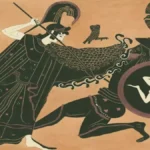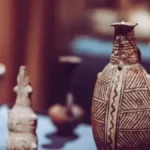The bodice, a garment that has shaped fashion and identity for centuries, remains a defining element of clothing across cultures and eras. Simply put, a bodice is the upper part of a dress, blouse, or gown that covers the torso and often provides structure, support, or decorative appeal. Yet, to reduce it to only a functional garment would miss its far-reaching cultural, social, and artistic significance. From medieval Europe’s corseted designs to the flowing, structured lines of modern haute couture, the bodice has mirrored the times, reflecting ideals of beauty, class, and expression. Whether tightly laced in Renaissance courts or designed for everyday wear in contemporary wardrobes, it continues to represent a fascinating intersection of fashion, history, and personal identity.
Understanding the bodice is not simply about clothing—it is about learning how people expressed themselves, how societies viewed femininity and elegance, and how textile innovations changed the way we live. The bodice has been a canvas of craftsmanship, often decorated with embroidery, jewels, or intricate fabrics, but it has also been a political statement, challenging societal restrictions on women’s bodies. In modern fashion, bodices have taken on fresh interpretations, from minimalist cuts to avant-garde experiments on the runway. For readers seeking a complete understanding of the bodice—its definition, origins, evolution, cultural symbolism, and presence in today’s fashion world—this guide provides both detailed insights and fresh perspectives.
In this article, we will delve into the historical evolution of bodices, their construction techniques, their cultural and social meanings, and their role in both traditional and modern fashion. We will also look at how designers continue to reinvent the bodice in ways that resonate with current trends while honoring its timeless role in garment design. Tables will highlight types of bodices and their characteristics, making it easier to visualize the diversity of this essential fashion piece.
What is a Bodice?
At its core, the bodice is the portion of a garment that covers the upper body, typically from the shoulders to the waist. Unlike a full dress, which integrates the skirt, or a blouse that may flow without structure, the bodice is distinct in that it is designed to fit closely to the torso. Traditionally, it has served both functional and aesthetic purposes. Functionally, it provides shape, support, and a foundation for the rest of the garment. Aesthetically, it frames the neckline, highlights the waist, and creates symmetry or drama depending on its cut and embellishment.
The word “bodice” originates from the 16th century, derived from the plural form of “body” or “bodies,” referring to the pair of stays or panels stitched together to form a fitted upper garment. In its early forms, bodices were often reinforced with boning or stays, which helped to mold the figure into the desired silhouette of the era. For women, the bodice often symbolized grace and beauty but also represented societal expectations of posture, discipline, and femininity.
Even today, while many modern bodices no longer rely on rigid structures, they retain the same defining principle: to accentuate and complement the human form. Designers frequently experiment with neckline shapes, sleeve styles, closures, and fabrics to create bodices that range from highly practical to strikingly dramatic. This balance of function and fashion has cemented the bodice as one of the most enduring and versatile elements of clothing design.
Historical Origins of the Bodice
The roots of the bodice stretch deep into history, reflecting broader cultural and societal changes. In medieval Europe, clothing for women began to take on more structured forms, leading to the development of fitted upper garments. During the 15th and 16th centuries, the bodice became a distinct piece of attire, often stiffened with stays and worn over chemises. This was also the time when corsetry and tightly laced bodices began to dominate fashion.
By the Renaissance, bodices became canvases of artistic expression. Wealthy women wore richly embroidered bodices adorned with pearls, jewels, and velvet, displaying both status and artistry. They were often separate from the skirt, meaning bodices could be interchanged to create different outfits. The Elizabethan era, in particular, popularized the pointed bodice with a sharp V-shaped waistline, which became synonymous with elegance.
During the Baroque and Rococo periods, bodices evolved into more elaborate constructions, featuring ornate trims, wide necklines, and structured boning that accentuated the bust and waist. In contrast, the 19th century ushered in both romanticism and practicality, with bodices designed to flatter softer, natural silhouettes while accommodating the demands of daily life. The Victorian era, however, saw a return to rigidity, with tightly corseted bodices symbolizing modesty and refinement.
The 20th century marked a radical departure. As women gained more independence, fashion followed suit. Bodices became less restrictive, moving away from corsetry and embracing freedom of movement. From flapper dresses of the 1920s with dropped bodices to the sculptural New Look of Dior in the 1950s, the bodice adapted to each wave of cultural and social transformation. Today, while the bodice retains echoes of its past, it is largely celebrated for versatility, artistry, and empowerment rather than restriction.
Types of Bodices
The bodice has appeared in countless variations across centuries. Each type has distinct features and purposes, from highlighting elegance to providing comfort and functionality. Below is a table outlining common bodice types:
Table 1: Types of Bodices and Their Characteristics
| Bodice Type | Key Features | Typical Use |
|---|---|---|
| Corset Bodice | Structured, boned, tightly laced, shapes waist and bust | Historical fashion, bridal wear, costume design |
| Empire Bodice | High waistline just below bust, flowing below | Regency fashion, maternity wear, evening gowns |
| Princess Bodice | Seamlines running vertically for a fitted, elongated look | Evening gowns, formal dresses |
| Halter Bodice | Straps tie or clasp behind neck, shoulders exposed | Summer wear, modern fashion, swimwear |
| Off-the-Shoulder Bodice | Neckline below shoulders, arms bare | Formal wear, romantic or dramatic styles |
| Bustier Bodice | Fitted, strapless, often with cups for bust support | Party wear, cocktail dresses, lingerie |
| Peplum Bodice | Bodice fitted at waist with a flared fabric extension | Workwear, chic casuals, semi-formal outfits |
| Asymmetrical Bodice | Uneven neckline or shoulder design | Avant-garde fashion, statement dresses |
| Wrap Bodice | Fabric overlaps, tied or buttoned for closure | Everyday wear, contemporary fashion |
| Sweetheart Bodice | Neckline shaped like top of a heart | Wedding gowns, evening dresses |
Each bodice type reflects not only aesthetic preferences but also cultural and functional needs. For instance, the empire bodice aligned with Regency ideals of elegance and comfort, while the corset bodice highlighted control and refinement. In contrast, modern asymmetrical or wrap bodices emphasize creativity and practicality, catering to diverse lifestyles and tastes.
Construction and Design Elements of a Bodice
Designing a bodice requires both artistry and technical precision. Unlike loose garments, the bodice must fit the contours of the human body, balancing comfort with aesthetics. This involves thoughtful consideration of fabric choice, structure, and embellishment.
The foundational step is selecting the fabric. Lightweight cottons or silks offer breathability and elegance, while heavier brocades, velvets, or satins provide structure and grandeur. For structured bodices, boning materials—historically whalebone, but now often steel or plastic—are integrated to maintain shape. Seams and darts are carefully planned to ensure the garment follows natural body lines without restricting movement.
Neckline shapes are another defining element, with variations like square, sweetheart, bateau, or plunging designs dramatically altering the garment’s overall appearance. Sleeves—or their absence—further transform the bodice’s character, ranging from puffed Renaissance sleeves to sleeveless modern interpretations. Closures, such as lacing, buttons, hooks, or zippers, are both functional and stylistic choices.
Decorative elements enhance bodices’ individuality. Embroidery, lace appliqués, sequins, and beadwork elevate a simple garment into a work of art. In haute couture, bodices often feature hand-stitched embellishments that showcase craftsmanship and creativity. Modern bodices may also integrate innovative fabrics, such as stretch blends, allowing flexibility without sacrificing style.
Ultimately, bodice construction remains a delicate interplay between tradition and innovation. While technology has streamlined sewing techniques, the underlying principle remains the same: to design a garment that flatters, empowers, and resonates with personal expression.
Cultural and Social Significance of the Bodice
Fashion is never just about clothing; it is a reflection of society. The bodice, more than most garments, has embodied ideals of femininity, power, and class across time. In the 16th and 17th centuries, tightly laced bodices symbolized discipline and control, aligning with broader societal expectations of women’s modesty and decorum. The way a bodice was adorned often reflected social rank: jeweled, embroidered bodices belonged to the elite, while simpler cotton versions were worn by commoners.
The bodice also became a site of resistance. In the late 19th and early 20th centuries, as women advocated for independence and suffrage, fashion shifted away from restrictive bodices and corsets. Looser styles symbolized liberation, aligning with broader feminist movements. This historical pivot demonstrates how the bodice was not just fabric and stitches, but a garment loaded with cultural meaning.
In non-Western contexts, bodices have also held cultural value. For instance, in South Asian attire, the bodice-like “choli” worn under saris is both functional and expressive, often richly decorated for festive occasions. Similarly, in traditional European folk costumes, bodices were central, incorporating embroidery unique to regions or communities.
As Coco Chanel once said, “Fashion is not something that exists in dresses only. Fashion is in the sky, in the street, fashion has to do with ideas, the way we live, what is happening.” The bodice, across its many forms, has carried these ideas, embodying societal values and individual identity simultaneously.
Bodice in Modern Fashion
In the modern era, the bodice has taken on a renewed role in fashion, blending historical inspiration with contemporary innovation. Designers frequently reimagine bodices in ways that challenge conventional boundaries, creating garments that are both wearable and artistic statements.
The 21st century has particularly seen the rise of bodices as standalone fashion pieces rather than merely structural undergarments. Bustiers and corset-style tops are now popular streetwear items, paired with jeans or skirts, symbolizing empowerment and body confidence rather than restriction. Bridal fashion continues to celebrate bodices, often using strapless sweetheart or off-the-shoulder designs that evoke romance while highlighting craftsmanship.
Sustainable fashion has also influenced bodice design. Many designers are experimenting with eco-friendly fabrics like organic cotton or bamboo blends, proving that elegance does not have to come at the environment’s expense. Technology, too, has made its mark, with 3D printing and digital design software enabling bodice structures previously unimaginable.
Celebrities and influencers have played a critical role in popularizing bodice styles. From red-carpet gowns featuring daring asymmetrical bodices to runway models showcasing minimalistic yet sculptural designs, the bodice continues to capture global attention. It has transitioned from a symbol of restriction to one of individuality, artistry, and power.
Table of Neckline Styles in Bodices
Table 2: Popular Neckline Styles for Bodices
| Neckline Style | Description | Common Usage |
|---|---|---|
| Sweetheart | Heart-shaped neckline, softens bustline | Bridal gowns, evening dresses |
| Square | Straight horizontal cut with right-angled sides | Renaissance-inspired dresses, casual wear |
| V-Neck | Deep V-shaped neckline elongates torso | Formal dresses, office wear, casual fashion |
| Bateau | Wide neckline following collarbone | Formal gowns, classic elegance |
| Scoop | Rounded neckline, modest or deep | Everyday wear, summer dresses |
| Off-the-Shoulder | Bare shoulders, dramatic effect | Romantic and formal wear |
| High Neck | Neckline extends upward, covering collarbone | Modern minimalism, winter wear |
| Halter | Straps around neck, exposing shoulders | Contemporary wear, swimwear, evening dresses |
| Asymmetrical | One-shoulder design, creates unique visual interest | Statement gowns, avant-garde looks |
This diversity of necklines allows bodices to adapt seamlessly to a wide range of personal styles and occasions.
Symbolism of the Bodice in Literature and Art
The bodice has also inspired countless works of literature, painting, and film, where it often represents ideals of femininity, allure, or power. Renaissance portraits frequently depict women in lavish bodices, emphasizing wealth and beauty. In Victorian novels, descriptions of bodices often signified social standing or morality. In modern cinema, bodices—whether in period dramas or fantasy films—serve as markers of both character and setting.
As Virginia Woolf once reflected, “Clothes… change our view of the world and the world’s view of us.” A bodice is more than just fabric; it is a statement of identity. Whether in Shakespearean plays, Jane Austen’s romantic worlds, or contemporary fashion photography, the bodice continues to symbolize much more than its physical form.
Conclusion
The bodice is far more than an upper garment—it is a historical, cultural, and artistic artifact that continues to evolve with time. From its medieval origins as a structured and restrictive torso covering to its reinvention as a symbol of empowerment in contemporary fashion, the bodice has reflected changing ideals of beauty, class, and identity. It has adapted across cultures, inspiring both tradition and innovation.
Today, bodices are celebrated for their versatility, from minimalist casual tops to breathtaking haute couture gowns. They remain deeply rooted in symbolism, representing both societal expectations and individual empowerment. As designers continue to innovate with fabrics, technologies, and cultural inspirations, the bodice stands as a timeless element of fashion that will endure in relevance and artistry.
Ultimately, the story of the bodice is the story of fashion itself: constantly evolving, deeply symbolic, and endlessly expressive. In every stitch, seam, and embellishment, it carries the weight of history while opening new possibilities for the future of clothing.
FAQs about Bodices
Q1: What is the main difference between a bodice and a blouse?
A bodice is structured and fitted to the torso, often forming part of a dress, while a blouse is usually looser and less structured.
Q2: Are bodices only worn by women?
Historically, bodices were associated with women’s fashion, but modern fashion occasionally incorporates bodice-like structures into menswear and unisex designs.
Q3: How are modern bodices different from historical ones?
Modern bodices prioritize comfort and creativity, often using stretch fabrics and innovative designs, unlike historical bodices that emphasized rigidity and structure.
Q4: Can a bodice be worn as a standalone garment?
Yes, many contemporary styles like bustiers or corset tops are designed to be worn as standalone fashion pieces.
Q5: Why are bodices so significant in fashion history?
Bodices reflect societal ideals, class structures, and cultural symbolism, making them central to understanding historical and modern fashion.











